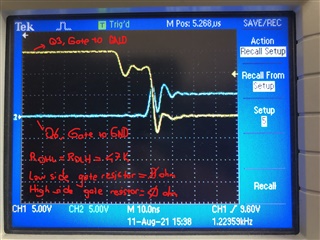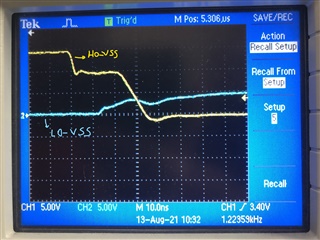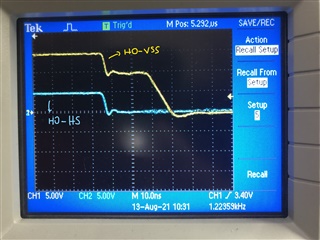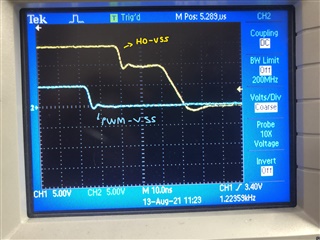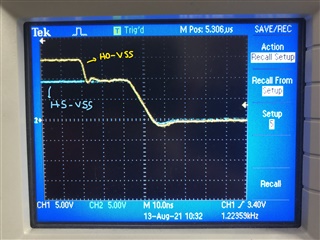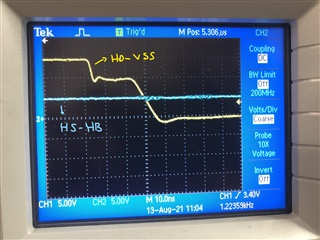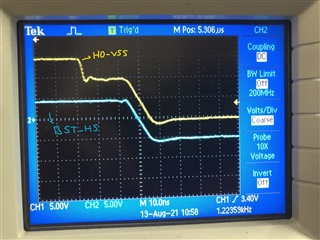Other Parts Discussed in Thread: UCC27611
Greetings to all,
I try to implement H-bridge structure with GaN type mosfets. The driver I am using is LMG1210. I have added the schematic and waveforms. I will try to summarize the problem below.
I put 47K resistor for DHL and DLH and zero ohm for both high and low side gate resistors. 47K resistor must make 12ns dead time between the falling edge of the high-side gate and the rising edge of the low-side gate. The source voltage of the high-side is decreasing until High_V at the drain, then stays there for 12ns. It looks like the high-side mosfet becomes fully off when the low-side mosfet turns on. However, it is not supposed to be like that. The high-side mosfet must be fully off, then 12ns later, the low-side mosfet must be on.
If I increase the gate resistors such as 4.7ohm at this point, even if the low-side mosfet turns on, it waits for some time to turn the high-side mosfet fully off and shoot-through occurs.
I was applying 10V for High_V for this experiment. When I give 180V, sometimes only high side mosfets, sometimes both high side and low side mosfets blow up. LMG1210 gate driver is also destroyed.
Then, I have used just a resistor instead of the coil as a load. In addition to that, I have added external freewheeling diodes on both high and low-side mosfets. Nothing changed. The waveforms are just like before. There is still shoot-through problem during falling edge of the high side.
Now, I am suspecting the LMG1210. It looks like that it is not working as it is supposed to be. I have replaced a couple of them. But the result is always the same.
Thank you
Best regards.


